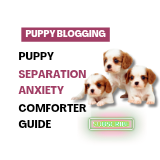Essential Routines for Your New Dog: Creating a Comfortable and Structured Home
- Dec 5, 2024
- 3 min read
Bringing a new dog into your home is a life-changing experience, filled with excitement, challenges, and the promise of a deep, lasting bond. As a dog begins their new life with you, it’s important to establish a routine that provides structure, comfort, and security. The first few weeks are crucial as your dog adjusts to their new environment, and setting clear expectations for both of you can make all the difference. Whether it's feeding, toilet training, or creating a calm space for rest, this guide will walk you through the essential routines to help your rescue dog thrive. Get ready to build a strong foundation for a lifetime of companionship and joy! 🐾💙

Routines to Think About:
Feeding Schedule 🍽️
What to do: Establish a consistent feeding routine (e.g., feeding at the same time each day). This helps your dog feel secure and know when to expect food.
Acceptable: Feeding at regular intervals, offering fresh water throughout the day.
Not Acceptable: Free feeding (leaving food out all day), as it can lead to overeating, digestion issues, and lack of routine.
Toilet Training Routine 🚽
What to do: Take your dog outside regularly (first thing in the morning, after meals, and before bed) to prevent accidents. Positive reinforcement for going outside.
Acceptable: Praise and reward your dog when they go outside to the toilet.
Not Acceptable: Punishing for accidents—this can create confusion and fear. Never rub their nose in the mess.
Exercise and Walks 🚶♂️🐕
What to do: Daily walks are important for mental and physical stimulation. Adjust based on your dog’s age, breed, and energy level.
Acceptable: Short, frequent walks for younger dogs or active breeds. Longer walks or playtime for dogs with higher energy levels.
Not Acceptable: Over-exercising an unfit or young dog, or not providing enough mental stimulation for breeds with higher activity needs.
Training Sessions 🧑🏫🐾
What to do: Set aside time each day for training. Short, positive, and fun sessions that focus on obedience and basic commands.
Acceptable: Short 5-10 minute training sessions that are rewarding for both you and your dog.
Not Acceptable: Long, tedious training sessions that lead to frustration. Avoid punishment-based methods.
Quiet Time and Crate Training 💤
What to do: Establish a quiet, safe space for your dog where they can rest and have time alone. Crate training can be beneficial for their security if done positively.
Acceptable: Using the crate as a safe retreat, and giving your dog time to relax in their space.
Not Acceptable: Using the crate for punishment or for extended periods of time without breaks.
Interaction with People & Other Pets 🐾👫🐶
What to do: Gradually introduce your dog to new people, pets, and environments to build socialisation. Start slowly and ensure positive experiences.
Acceptable: Positive and controlled socialisation with people and other animals at a pace your dog is comfortable with.
Not Acceptable: Forcing interactions with people, children, or other pets when your dog is anxious or fearful.
Sleep Routine 🛏️💤
What to do: Establish a bedtime routine that helps your dog understand when it’s time to wind down. This could include a potty break, a small walk, or some relaxing bonding time.
Acceptable: A calm environment with a consistent sleep area (bed, crate, etc.).
Not Acceptable: Allowing your dog to sleep in your bed if it causes behavioural issues (e.g., dominance or separation anxiety). However, if you allow this, it should be consistent and not cause problems.
What Is Acceptable in Your Household:
Clear rules about behaviour: Are there areas of the house they should stay out of (e.g., the kitchen or bedroom)? Are they allowed on furniture or do they have their own spot? 🏠
Consistency in interactions: Establishing boundaries around attention (e.g., no jumping up for attention, no begging during meals) 🛋️
Separation when needed: When not home, crate training or using baby gates to provide them a quiet, safe space. 🚪
What Is Not Acceptable in Your Household:
Inconsistent rules: Mixed signals (e.g., allowing the dog on the couch some days and not others) can cause confusion. 🚫
Punitive behaviours: Yelling or using physical punishment to correct unwanted behaviours. This creates fear and can damage the bond. ❌
Unsupervised freedom: Allowing your dog unsupervised freedom in the home without training, leading to potential destructive behaviours or accidents. 🛑










Comments